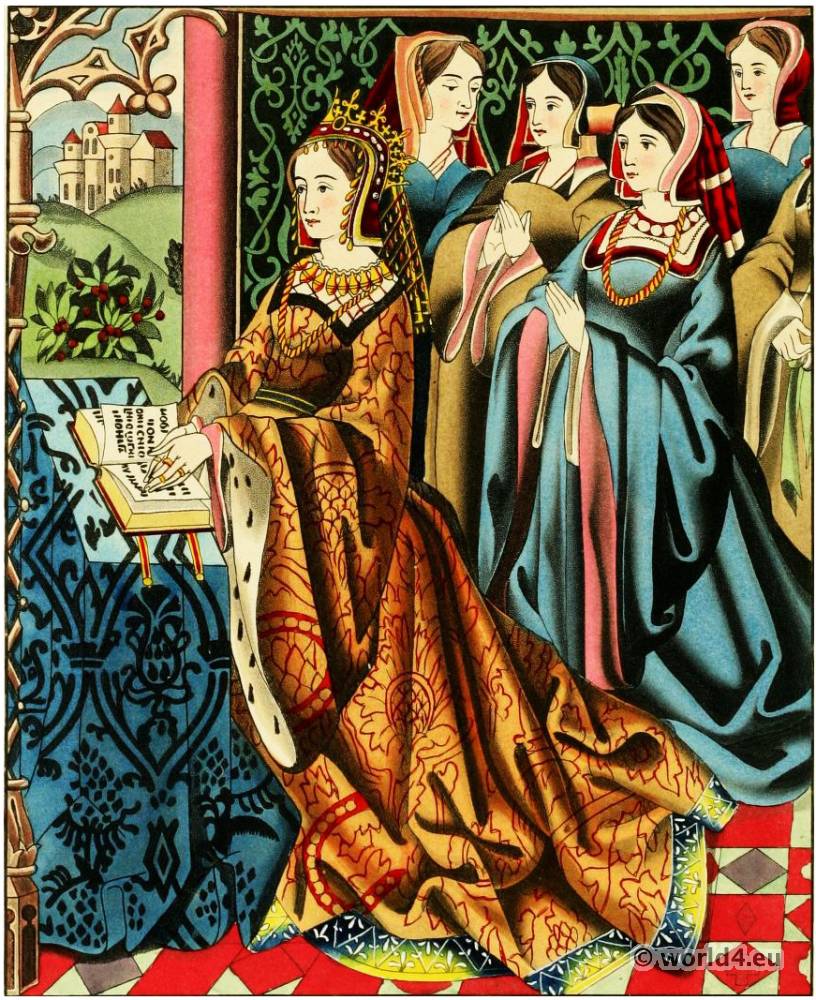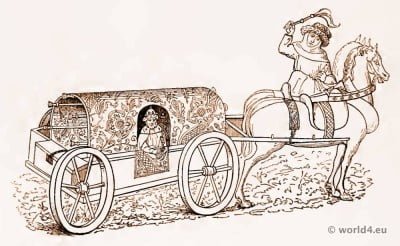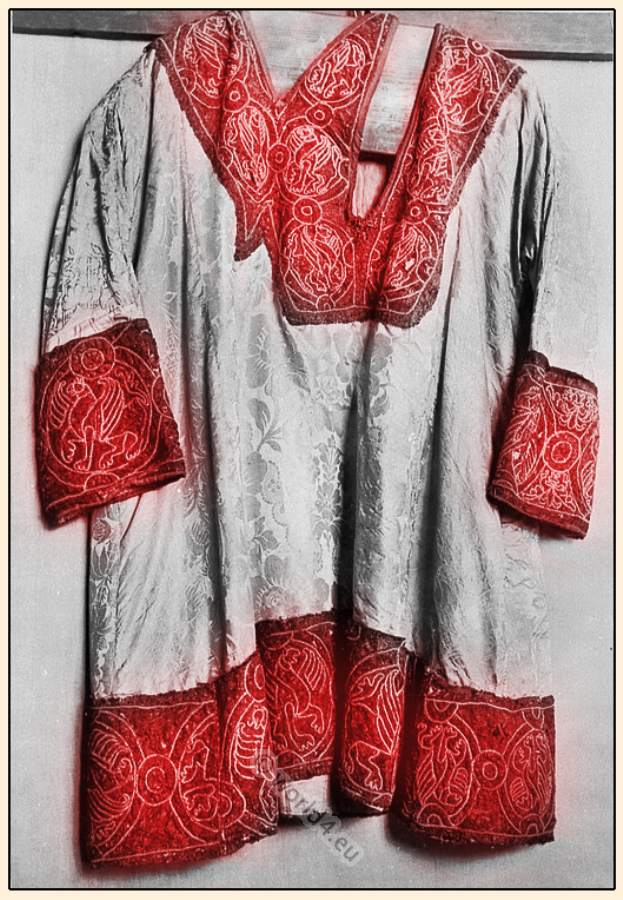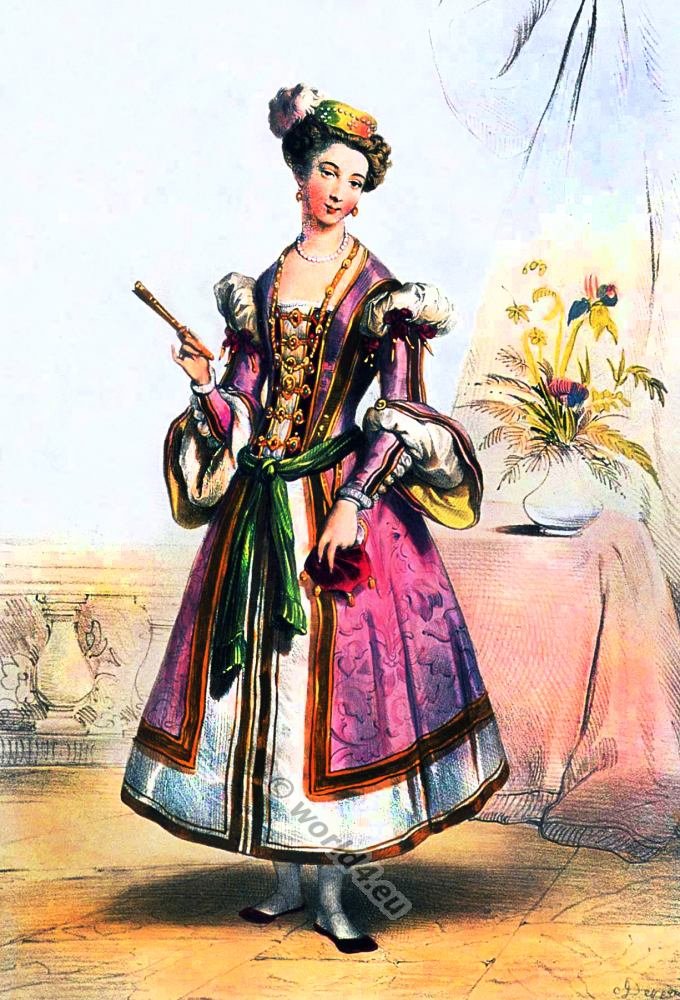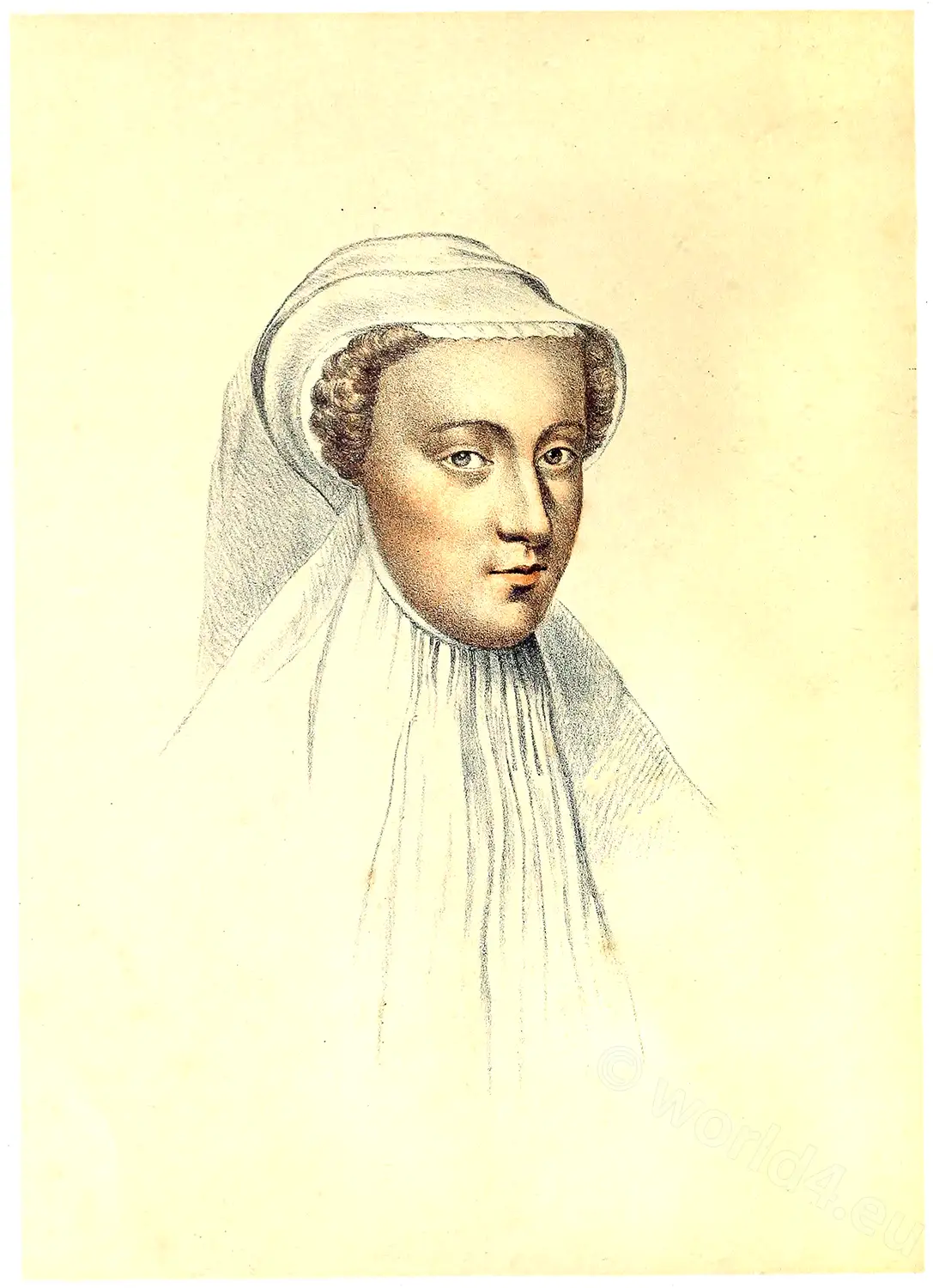Margaret of Anjou.
Marguerite d’Anjou (born on 23 or 24 March 1430, probably in Pont-à-Mousson or Nancy, died on 25 August 1482 in Dampierre-sur-Loire), Princess of Lorraine et de Bar, was the wife of King Henry VI of England. She was Queen Consort of England from 1445 to 1461 and then from 1470 to 1471.
Her aunt Marie d’Anjou married King Charles VII of France. Marguerite was the cousin of King Louis XI, her paternal grandmother happens to be the famous Yolande of Aragon (1384 – 1442 called Queen of the Four Kingdoms. Joan of Arc spoke about Jolanthe as “Ma Reyne”.), her maternal grandmother was the beautiful Marguerite of Bavaria (1363–1423).
Margaret of Anjou was the daughter of René of Anjou, later King of Naples and Titular King of Jerusalem, and of Isabella of Lorraine. She was married to Henry VI, King of England. On 23 April 1445, in accordance with the Treaty of Tours (1444) between Charles VII, King of France, and Henri VI, she was married to the latter.
Cardinal de Beaufort and the Earl of Suffolk William de la Pole convinced Henry VI that the best way to make peace with France was to marry Marguerite d’Anjou, niece of King Charles VII. Henry agrees and instructs Suffolk to go and negotiate with the King of France.
In 1453 she gave birth to this one son, who was called Edward. Beautiful, witty and enterprising, she soon knew how to gain great influence.
She ousted Humphrey, Duke of Gloucester, her husband’s uncle. Since Henry was often mentally deranged, she took over the government together with the Duke of Suffolk, after his death with Edmund Beaufort, 1st Duke of Somerset. In 1448, she also founded the Queens’ College in Cambridge.
Involved from 1455 in the Wars of the Roses between the House of Lancaster, to which her husband belonged, and the House of York, which accused her of foisting her son Edward, Margaret developed an extraordinary intellectual power and dominated politics in the same way as the army.
Richard Plantagenet, 3rd Duke of York and leader of the House of York, lost his life on 30 December 1460 against her troops at the Battle of Wakefield. Similarly, she defeated Richard Neville, 16th Earl of Warwick in the Second Battle of St Albans on 17 February 1461. Her attempts to oust Richard Plantagenet’s son, Edward IV, who had been elevated to the throne by Warwick, and to enforce her son’s rightful claim to the throne were unsuccessful, however.
After the horrible defeat of the Lancaster Party at Towton (29 March 1461), she fled via Scotland to France to Louis XI, who granted her 2,000 soldiers on condition that Calais be surrendered. With this army, strengthened by English refugees, she invaded Northumberland from Scotland with her son Edward, but had to flee to the mainland again in 1463 after the failure of this advance. Here Louis XI reconciled them in 1470 with their mortal enemy Warwick, who had changed sides. Warwick, called the kingmaker, then expelled Edward IV and put Henry VI back on the throne.
On the day of the Battle of Barnet (14 April 1471) in which Warwick fell, Margaret landed at Weymouth in England, but was defeated by Edward IV at the Battle of Tewkesbury (4 May) with her retinue and fell into the hands of her enemy through Sir William Stanley. Her son had been killed while fleeing, her captive husband Henry VI was murdered in the Tower of London on 21 May. She was later imprisoned at Wallingford Castle. It was not until 1476 that she was released from prison through the intercession of Louis XI, returned to France and died there. She is buried in Angers Cathedral.
Margaret of Anjou Queen of Henry VI. and her court by Henry Shaw.
LONG attachments and frequent visits rendered King Henry VI and his queen Margaret, even in the midst of their misfortunes, great favourites with, the people of Coventry.
Their memory is still preserved there in the traditions connected with the tapestry, of which a portion is represented in our plate. It is placed at the north end of the dining hall of St. Mary’s Hall, at Coventry, above the dais, occupying the space beneath the windows, and is thirty feet long by ten high. A compartment in the middle, now much defaced, appears to have represented the Deity, with other sacred objects.
To the left of this are seen the king, with his court, occupied in prayer. Over their heads are saints (their patrons), and some emblematical figures. On the other side of the central compartment are the queen, with the ladies of her court, also praying. From the similarity of the king to other portraits of him, it is believed that we have here a correct portrait of Queen Margaret. She is represented as a tall stately woman, with somewhat of a masculine face.
She is dressed in a rich flowing robe, with a chain of gold round her neck. The lady kneeling behind the queen, who has also a chain of gold, is identified by tradition with the Duchess of Buckingham; but we cannot place much confidence in such authority.
In the tapestry, above this group of ladies, are female saints, placed similarly to the saints on the side of the king. St. Mary’s Hall, one of the most remarkable buildings in Coventry, which owes its foundation to some of those gilds of merchants, which here, as well as at Chester, are so well known to the literary antiquarian by the mysteries and miracle plays they were accustomed to perform on their festival days, was itself built in the earlier part of the reign of Henry VI. Among the numerous paintings in its windows, and the architectural ornaments with which it is profusely decorated, the arms and figure of that monarch recur more than once.
The border at the outside of the foregoing page is taken from the Shrewsbury book; the daisies, of which it is composed, being a conceit upon the queen’s name of Margaret (marguerite).
The wood-cut at the foot of the present page is taken from an illumination in a fine manuscript in the British Museum (MS. Harl. No. 4372), and represents a coach of the middle or latter half of the fifteenth century, at which time probably’ this manuscript was written. It contains a French translation of Valerius Maximus, made in the reign of Charles V. of France, and dedicated to that monarch; but the compiler of the Harleian Catalogue can hardly be correct in stating that the MS. itself may be of that age.
The kind of carriage here represented, very similar in form to our covered waggons, is frequently found in MSS. from an early period down to the sixteenth century. It appears to be covered with figured silk, supported upon brass rods.
Source: Dresses and Decorations of the Middle Ages from the 7th to the 17th centuries by Henry Shaw F.S.A. Published: London William Pickering 1843.
Related
Discover more from World4 Costume Culture History
Subscribe to get the latest posts sent to your email.

